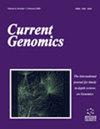Integrative Bioinformatics Analysis for Targeting Hub Genes in Hepatocellular Carcinoma Treatment
IF 1.4
4区 生物学
Q4 BIOCHEMISTRY & MOLECULAR BIOLOGY
引用次数: 0
Abstract
Background: The damage in the liver and hepatocytes is where the primary liver cancer begins, and this is referred to as Hepatocellular Carcinoma (HCC). One of the best methods for detecting changes in gene expression of hepatocellular carcinoma is through bioinformatics approaches. Objective: This study aimed to identify potential drug target(s) hubs mediating HCC progression using computational approaches through gene expression and protein-protein interaction datasets. Methodology: Four datasets related to HCC were acquired from the GEO database, and Differentially Expressed Genes (DEGs) were identified. Using Evenn, the common genes were chosen. Using the Fun Rich tool, functional associations among the genes were identified. Further, protein-protein interaction networks were predicted using STRING, and hub genes were identified using Cytoscape. The selected hub genes were subjected to GEPIA and Shiny GO analysis for survival analysis and functional enrichment studies for the identified hub genes. The up-regulating genes were further studied for immunohistopathological studies using HPA to identify gene/protein expression in normal vs HCC conditions. Drug Bank and Drug Gene Interaction Database were employed to find the reported drug status and targets. Finally, STITCH was performed to identify the functional association between the drugs and the identified hub genes. Results: The GEO2R analysis for the considered datasets identified 735 upregulating and 284 downregulating DEGs. Functional gene associations were identified through the Fun Rich tool. Further, PPIN network analysis was performed using STRING. A comparative study was carried out between the experimental evidence and the other seven data evidence in STRING, revealing that most proteins in the network were involved in protein-protein interactions. Further, through Cytoscape plugins, the ranking of the genes was analyzed, and densely connected regions were identified, resulting in the selection of the top 20 hub genes involved in HCC pathogenesis. The identified hub genes were: KIF2C, CDK1, TPX2, CEP55, MELK, TTK, BUB1, NCAPG, ASPM, KIF11, CCNA2, HMMR, BUB1B, TOP2A, CENPF, KIF20A, NUSAP1, DLGAP5, PBK, and CCNB2. Further, GEPIA and Shiny GO analyses provided insights into survival ratios and functional enrichment studied for the hub genes. The HPA database studies further found that upregulating genes were involved in changes in protein expression in Normal vs HCC tissues. These findings indicated that hub genes were certainly involved in the progression of HCC. STITCH database studies uncovered that existing drug molecules, including sorafenib, regorafenib, cabozantinib, and lenvatinib, could be used as leads to identify novel drugs, and identified hub genes could also be considered as potential and promising drug targets as they are involved in the gene-chemical interaction networks. Conclusion: The present study involved various integrated bioinformatics approaches, analyzing gene expression and protein-protein interaction datasets, resulting in the identification of 20 topranked hubs involved in the progression of HCC. They are KIF2C, CDK1, TPX2, CEP55, MELK, TTK, BUB1, NCAPG, ASPM, KIF11, CCNA2, HMMR, BUB1B, TOP2A, CENPF, KIF20A, NUSAP1, DLGAP5, PBK, and CCNB2. Gene-chemical interaction network studies uncovered that existing drug molecules, including sorafenib, regorafenib, cabozantinib, and lenvatinib, can be used as leads to identify novel drugs, and the identified hub genes can be promising drug targets. The current study underscores the significance of targeting these hub genes and utilizing existing molecules to generate new molecules to combat liver cancer effectively and can be further explored in terms of drug discovery research to develop treatments for HCC.针对肝细胞癌治疗中枢基因的综合生物信息学分析
背景:肝脏和肝细胞的损伤是原发性肝癌的起始部位,被称为肝细胞癌(HCC)。检测肝细胞癌基因表达变化的最佳方法之一是生物信息学方法。研究目的本研究旨在通过基因表达和蛋白质相互作用数据集,利用计算方法确定介导 HCC 进展的潜在药物靶点。研究方法:从 GEO 数据库中获取与 HCC 相关的四个数据集,并确定差异表达基因(DEG)。利用Evenn选择常见基因。使用 Fun Rich 工具确定了基因之间的功能关联。此外,还使用 STRING 预测了蛋白质-蛋白质相互作用网络,并使用 Cytoscape 确定了中心基因。对选定的中心基因进行 GEPIA 和 Shiny GO 分析,以对已确定的中心基因进行生存分析和功能富集研究。利用 HPA 进一步对上调基因进行免疫组织病理学研究,以确定正常与 HCC 条件下的基因/蛋白质表达情况。利用药物库和药物基因相互作用数据库查找报告的药物状态和靶点。最后,采用 STITCH 方法确定药物与已确定的枢纽基因之间的功能关联。结果对数据集进行的 GEO2R 分析确定了 735 个上调 DEGs 和 284 个下调 DEGs。通过 Fun Rich 工具确定了功能基因关联。此外,还使用 STRING 进行了 PPIN 网络分析。在 STRING 中对实验证据和其他七个数据证据进行了比较研究,发现网络中的大多数蛋白质都参与了蛋白质之间的相互作用。此外,还通过 Cytoscape 插件对基因的排序进行了分析,确定了连接密集的区域,从而选出了涉及 HCC 发病机制的前 20 个枢纽基因。确定的枢纽基因有这些基因包括:KIF2C、CDK1、TPX2、CEP55、MELK、TTK、BUB1、NCAPG、ASPM、KIF11、CCNA2、HMMR、BUB1B、TOP2A、CENPF、KIF20A、NUSAP1、DLGAP5、PBK 和 CCNB2。此外,GEPIA 和 Shiny GO 分析还提供了对枢纽基因的存活率和功能富集研究的见解。HPA 数据库研究进一步发现,上调基因参与了正常组织与 HCC 组织蛋白质表达的变化。这些发现表明,中心基因肯定与 HCC 的进展有关。STITCH 数据库研究发现,索拉非尼、瑞戈非尼、卡博赞替尼和来伐替尼等现有药物分子可作为新药研发的线索。结论本研究采用了多种综合生物信息学方法,分析了基因表达和蛋白质相互作用数据集,最终确定了 20 个与 HCC 进展相关的顶级中心基因。它们是KIF2C、CDK1、TPX2、CEP55、MELK、TTK、BUB1、NCAPG、ASPM、KIF11、CCNA2、HMMR、BUB1B、TOP2A、CENPF、KIF20A、NUSAP1、DLGAP5、PBK和CCNB2。基因-化学相互作用网络研究发现,现有的药物分子,包括索拉非尼、瑞戈非尼、卡博赞替尼和来伐替尼,都可以作为鉴定新药的线索,而鉴定出的枢纽基因可以成为有希望的药物靶点。本研究强调了靶向这些枢纽基因和利用现有分子生成新分子以有效抗击肝癌的意义,并可在药物发现研究方面进一步探索开发 HCC 的治疗方法。
本文章由计算机程序翻译,如有差异,请以英文原文为准。
求助全文
约1分钟内获得全文
求助全文
来源期刊

Current Genomics
生物-生化与分子生物学
CiteScore
5.20
自引率
0.00%
发文量
29
审稿时长
>0 weeks
期刊介绍:
Current Genomics is a peer-reviewed journal that provides essential reading about the latest and most important developments in genome science and related fields of research. Systems biology, systems modeling, machine learning, network inference, bioinformatics, computational biology, epigenetics, single cell genomics, extracellular vesicles, quantitative biology, and synthetic biology for the study of evolution, development, maintenance, aging and that of human health, human diseases, clinical genomics and precision medicine are topics of particular interest. The journal covers plant genomics. The journal will not consider articles dealing with breeding and livestock.
Current Genomics publishes three types of articles including:
i) Research papers from internationally-recognized experts reporting on new and original data generated at the genome scale level. Position papers dealing with new or challenging methodological approaches, whether experimental or mathematical, are greatly welcome in this section.
ii) Authoritative and comprehensive full-length or mini reviews from widely recognized experts, covering the latest developments in genome science and related fields of research such as systems biology, statistics and machine learning, quantitative biology, and precision medicine. Proposals for mini-hot topics (2-3 review papers) and full hot topics (6-8 review papers) guest edited by internationally-recognized experts are welcome in this section. Hot topic proposals should not contain original data and they should contain articles originating from at least 2 different countries.
iii) Opinion papers from internationally recognized experts addressing contemporary questions and issues in the field of genome science and systems biology and basic and clinical research practices.
 求助内容:
求助内容: 应助结果提醒方式:
应助结果提醒方式:


